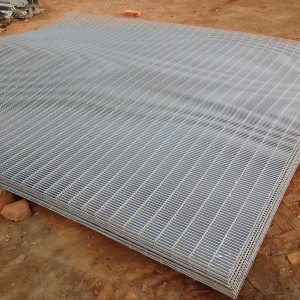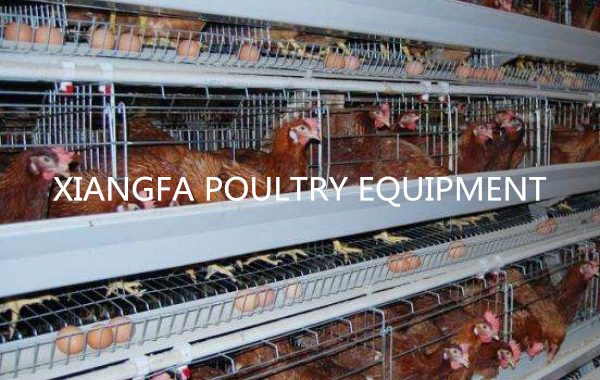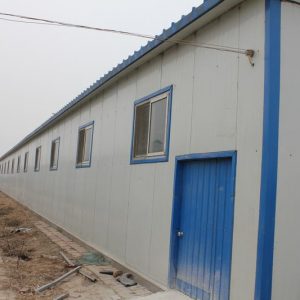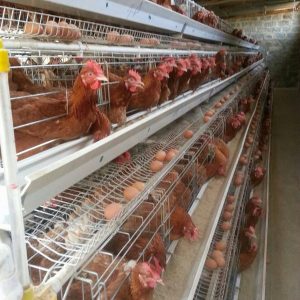
Seven measures to avoid chicken heatstroke
In the hot summer, the high temperature of the environment in the chicken house will cause the heat stress reaction of the chickens, which will seriously affect the performance of the broilers. The most suitable temperature for the growth of broilers is 18℃-21℃. When the temperature is higher than 28℃, the body temperature of the chickens will rise. High, reduced feed intake and increased drinking water; when the ambient temperature exceeds 37°C for a long time, chickens will only die. The correspondent of Xinmu.com reminds you that you should take appropriate measures to prevent heatstroke and reduce temperature according to the local temperature.
1. Greening the sports field and putting up sunshade nets
(1) Greening around the chicken house and sports field. Try to avoid bare soil on the ground around the chicken house, plant grass and trees around the chicken house to reduce reflected heat. The large amount of water vapor evaporated by plants can lower the temperature, moisturize the air and reduce dust.
(2) Avoid light and shade. Set up a sunshade net on the sunny side of the chicken house, extending about 4m from the 0.2m under the eaves. If possible, install a hose in the middle of the sunshade net, install nozzles every 2-3m, and spray upwards intermittently.
2. Ventilation and cooling in the house
Ventilation is an important measure to ensure the environment in the chicken house, which is conducive to the heat dissipation of the chicken body and the exhaust of dirty air. Installing a fan in the house can increase the air flow and reduce the temperature in the house. It is recommended to install a fan for every 1,000 chickens. A spray device is installed in the chicken house, and the sprayed cold water can absorb the heat in the house. At the same time, it can cooperate with the fan to speed up the air circulation, which can effectively reduce the house temperature by 2-4°C. The tile surface of the chicken house can be installed with a spray device to block the heat transfer from the roof. The correspondent of Xinmu.com reminds you that the chicken farms or farmers who have the conditions to breed fast and large broilers, it is recommended to install longitudinal fans and wet curtains to achieve the best cooling effect.
3. Control the feeding density
The low feeding density is good for the heat dissipation of the chicken body. The seedling density of fast-large and medium-speed varieties should be controlled within 9 per square meter, and the long-day-old varieties should not exceed 11 per square meter, so as to provide a relatively comfortable growth environment for the chickens and effectively avoid Heatstroke in chickens caused by continuous hot weather. The specific seedling density should also be determined according to the local climate, the quality of the chicken coop, the equipment, and the size of the sports field.
4. Control the thickness of the litter
The thickness of the litter should be appropriately reduced in the hot season, generally within 1-3cm. Chicken manure is easy to ferment to produce heat and emit harmful gases. It is necessary to clean out the chicken house in time to keep the house clean and dry.
5. Ensure adequate drinking water
Chicken drinking water is generally 1.5-2 times of feed intake. During high temperature, no matter what kind of drinking equipment is used, fresh and clean drinking water should be uninterrupted and sufficient. The water supply system should be inspected frequently, cleaned frequently, and disinfected frequently, especially to prevent accidents caused by failure of the water line.
6. Scientific feeding
In summer, the environmental temperature is high, and the feed intake of chickens decreases. It is recommended to strengthen night and outside feeding. The cool time between 10 pm and early morning of the next day allows the chickens to eat more to reach the daily feed intake of the normal period. A certain amount of wet food can also be fed when necessary. In summer, the high temperature and humidity should prevent the feed from becoming moldy.
7. Reduce heat stress of chickens and use drugs rationally
Keep the chicken coop quiet, transfer chickens to groups, and vaccinate in the cool early morning to reduce stress. Vc and 0.5% sodium bicarbonate can be added to the drinking water to increase the feed intake of the chickens, enhance the body’s resistance, and relieve the acid-base imbalance caused by heat stress. Add electrolytes and oral rehydration salts in drinking water to adjust the body’s electrolyte balance, relieve acidosis, and enhance the body’s resistance. Severe heatstroke can be treated with traditional Chinese medicine, such as 40g Fushen, 10g Niu Sha, 15g Realgar, 30g Mint, 35g Forsythia, 35g Scrophulariae, 30g Scutellaria. Rinse 5kg of water for drinking for 100 chickens.



